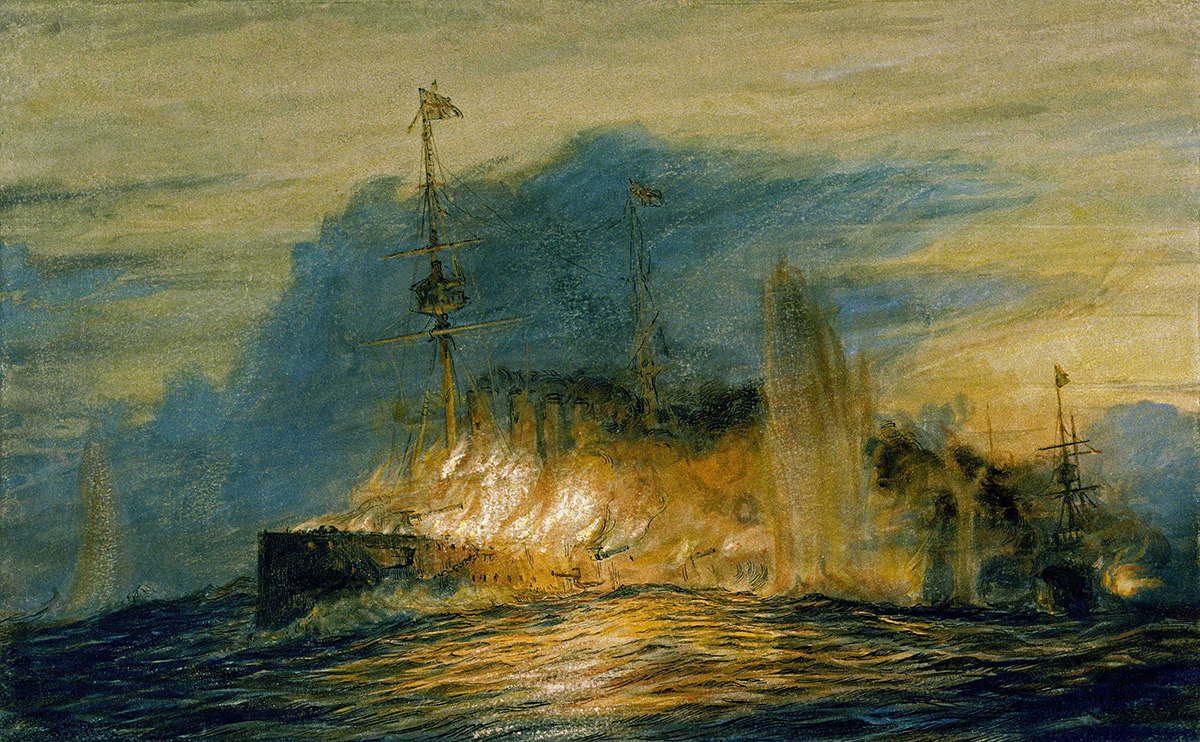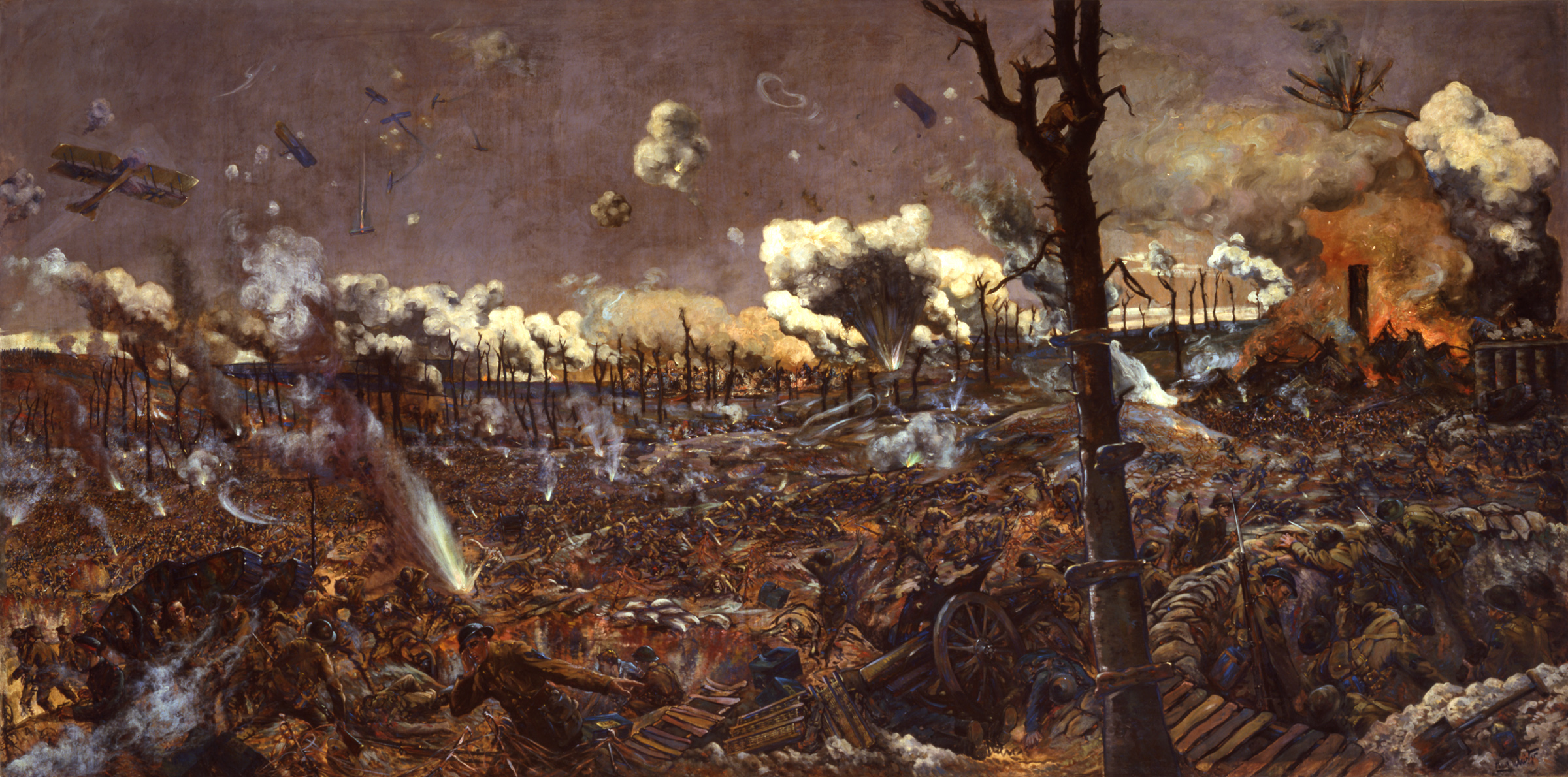Browse "Things"
-
Article
Battle of Baltimore
The Battle of Baltimore, from 12 to 15 September 1814, was a British defeat against American forces in the War of 1812.
"https://d2ttikhf7xbzbs.cloudfront.net/media/media/9930fd50-9090-40ee-9db8-b2b0e227370c.jpg" // resources/views/front/categories/view.blade.php
https://d2ttikhf7xbzbs.cloudfront.net/media/media/9930fd50-9090-40ee-9db8-b2b0e227370c.jpg
-
Article
Battle of Batoche
The Battle of Batoche, 9–12 May 1885, was the last major action of the North-West Resistance. Under the leadership of Louis Riel, Métis and their First Nations allies were defeated by government troops.
"https://d2ttikhf7xbzbs.cloudfront.net/media/media/c685f017-4089-45e3-8f17-7e68149e2550.jpg" // resources/views/front/categories/view.blade.php
https://d2ttikhf7xbzbs.cloudfront.net/media/media/c685f017-4089-45e3-8f17-7e68149e2550.jpg
-
Article
The Newfoundland Regiment at Beaumont-Hamel
On 1 July 1916, Allied forces launched a major offensive in France during the First World War. The opening of the Somme offensive turned into one of the deadliest days in the history of modern warfare. At the village of Beaumont-Hamel, the Newfoundland Regiment suffered catastrophic losses. More than 80 percent of the soldiers who advanced that day were either killed or wounded. In one morning, the regiment suffered approximately 700 casualties, including more than 300 dead.
"https://d2ttikhf7xbzbs.cloudfront.net/media/media/893d1022-5a54-4070-89cd-4bce24aa2783.jpg" // resources/views/front/categories/view.blade.php
https://d2ttikhf7xbzbs.cloudfront.net/media/media/893d1022-5a54-4070-89cd-4bce24aa2783.jpg
-
Article
Battle of Beaver Dams
The Battle of Beaver Dams took place during the War of 1812. On 24 June 1813, American troops marched from Fort George and intended to surprise the British at Beaver Dams. Laura Secord, a woman living in Queenston where the Americans had temporarily lodged, learned about this plan, and set off on a journey to warn the British. When the Americans resumed their trek to Beaver Dams, they were ambushed by Kanyen'kehà:ka (Mohawk) and other Indigenous warriors. The Americans lost the battle, surrendering to British troops led by Lieutenant James FitzGibbon (also spelled Fitzgibbon). The Battle of Beaver Dams established the importance of professional soldiering, Indigenous warfare and luck involved in British victory.
"https://d2ttikhf7xbzbs.cloudfront.net/media/media/SecordWarnsFitzGibbon.jpg" // resources/views/front/categories/view.blade.php
https://d2ttikhf7xbzbs.cloudfront.net/media/media/SecordWarnsFitzGibbon.jpg
-
Article
Battle of Beaver Dams National Historic Site of Canada
In 1976, the cairn was moved to the newly created Battle of Beaverdams Park in Thorold. Also moved to the park was a stone monument, erected in 1874, marking the grave of 16 American soldiers found during the construction of the third Welland Canal.
"https://d2ttikhf7xbzbs.cloudfront.net/media/media/ed860320-50c1-449e-884d-bd4968480689.jpg" // resources/views/front/categories/view.blade.php
https://d2ttikhf7xbzbs.cloudfront.net/media/media/ed860320-50c1-449e-884d-bd4968480689.jpg
-
Article
Canada and the Second Battle of Cambrai
The Second Battle of Cambrai in northern France took place from 27 September to 11 October 1918, during the First World War. The battle was among the Canadian Corps' most impressive tactical victories of the war, particularly because of the Canadians' skillful use of military engineers. It was part of a series of connected battles at the start of the Hundred Days Campaign, which would lead to the defeat of Germany and the end the war. Victory came at a heavy cost, however: more than 30,000 Canadians were killed or wounded.
"https://d2ttikhf7xbzbs.cloudfront.net/media/media/a003268-v8.jpg" // resources/views/front/categories/view.blade.php
https://d2ttikhf7xbzbs.cloudfront.net/media/media/a003268-v8.jpg
-
Article
Battle of Châteauguay
From the outset, Hampton's cause was fraught with challenges. Approximately 1000 of the New York militia who were a part of his army refused to cross the border, and during the battle itself, several of his officers were seen abandoning their men and positions for safer ground.
"https://d2ttikhf7xbzbs.cloudfront.net/media/media/cda45a2f-f1cd-4579-9bf4-528f87a529dd.jpg" // resources/views/front/categories/view.blade.php
https://d2ttikhf7xbzbs.cloudfront.net/media/media/cda45a2f-f1cd-4579-9bf4-528f87a529dd.jpg
-
Article
Battle of Chippawa
Brown's division crossed the Niagara River into Upper Canada on 3 July 1814 and within hours took possession of Fort Erie.
"https://d2ttikhf7xbzbs.cloudfront.net/media/media/0a912643-d9dd-44f2-bc07-3664e3cee776.jpg" // resources/views/front/categories/view.blade.php
https://d2ttikhf7xbzbs.cloudfront.net/media/media/0a912643-d9dd-44f2-bc07-3664e3cee776.jpg
-
Article
Battle of Chippawa National Historic Site of Canada
The battleground was designated as a national historic site in 1920, but is owned and administered by the Niagara Parks Commission. Called Chippawa Battlefield Park, it lies on the west side of the Niagara River Parkway.
"https://d2ttikhf7xbzbs.cloudfront.net/media/media/0a912643-d9dd-44f2-bc07-3664e3cee776.jpg" // resources/views/front/categories/view.blade.php
https://d2ttikhf7xbzbs.cloudfront.net/media/media/0a912643-d9dd-44f2-bc07-3664e3cee776.jpg
-
Article
Battle of Cook's Mills National Historic Site of Canada
The Historic Sites and Monuments Board of Canada designated the battleground at Cook's Mills as a national historic site in 1921. Two years later, a plaque summarizing the story of the skirmish was mounted on a stone cairn on the field of action.
"https://development.thecanadianencyclopedia.ca/images/tce_placeholder.jpg?v=e9dca980c9bdb3aa11e832e7ea94f5d9" // resources/views/front/categories/view.blade.php
https://development.thecanadianencyclopedia.ca/images/tce_placeholder.jpg?v=e9dca980c9bdb3aa11e832e7ea94f5d9
-
Article
Battle of Coronel
In the Battle of Coronel, warships of the powerful German East Asiatic Squadron defeated a much weaker Royal Navy squadron. The battle was fought off the coast of Chile near the port city of Coronel on 1 November 1914. Four midshipmen of the Royal Canadian Navy went down with the British flagship. They were the first Canadians to die in battle during the First World War.
"https://d2ttikhf7xbzbs.cloudfront.net/BattleCoronel/TCE_Coronel_Good_Hope_ablaze.jpg" // resources/views/front/categories/view.blade.php
https://d2ttikhf7xbzbs.cloudfront.net/BattleCoronel/TCE_Coronel_Good_Hope_ablaze.jpg
-
Article
Battle of Courcelette
The Battle of Courcelette, or the Battle of Flers-Courcelette, was part of the Somme offensive during the First World War. The Battle of Courcelette was fought from 15 to 22 September 1916. It resulted in thousands of battlefield casualties, but also signalled the start of new thinking in military tactics that would eventually solve the riddle of the trenches and help turn the tide of the war. Tanks were used in battle for the first time during the Battle of Courcelette as well as the creeping artillery barrage.
"https://d2ttikhf7xbzbs.cloudfront.net/media/media/09ca7acc-025e-4cca-9499-ecda8d450331.jpg" // resources/views/front/categories/view.blade.php
https://d2ttikhf7xbzbs.cloudfront.net/media/media/09ca7acc-025e-4cca-9499-ecda8d450331.jpg
-
Article
Battle of Crysler's Farm
Boyd's troops were doggedly pursued by a significantly smaller British force led by Lieutenant Colonel Joseph Wanton Morrison. After constant pressure from Canadian Voltigeurs and Tyendinaga Mohawks under Morrison's command, Boyd finally turned his army to confront them.
"https://d2ttikhf7xbzbs.cloudfront.net/media/media/32ebdaa1-6004-4100-9bdd-5565c2c10307.jpg" // resources/views/front/categories/view.blade.php
https://d2ttikhf7xbzbs.cloudfront.net/media/media/32ebdaa1-6004-4100-9bdd-5565c2c10307.jpg
-
Article
Battle of Crysler's Farm National Historic Site of Canada
The Battle of Crysler's Farm National Historic Site commemorates a battle fought during the War of 1812 on the fields of farmer John Crysler on the banks of the St Lawrence River near Morrisburg, Ontario, on 11 November 1813. The British were grossly outnumbered at this battle but succeeded in defeating an American army, ending their plans to attack Montreal.
"https://d2ttikhf7xbzbs.cloudfront.net/media/media/7b2eb773-c251-420c-a574-4ca7212f66db.jpg" // resources/views/front/categories/view.blade.php
https://d2ttikhf7xbzbs.cloudfront.net/media/media/7b2eb773-c251-420c-a574-4ca7212f66db.jpg
-
Article
Battle of Cut Knife
The Battle of Cut Knife is a significant battle that took place during the North-West Resistance of 1885. The Cut Knife battlefield is located on the Poundmaker Reserve, about 40 km west of Battleford, Saskatchewan, just north of Cut Knife Hill, a feature named for a Sarcee warrior who died near there. A cairn sits near the middle of the battlefield, near the grave of Pitikwahanapiwiyin (Poundmaker).
"https://d2ttikhf7xbzbs.cloudfront.net/media/media/fd1cfa92-6771-4edb-aa49-9f9379a3d359.jpg" // resources/views/front/categories/view.blade.php
https://d2ttikhf7xbzbs.cloudfront.net/media/media/fd1cfa92-6771-4edb-aa49-9f9379a3d359.jpg
